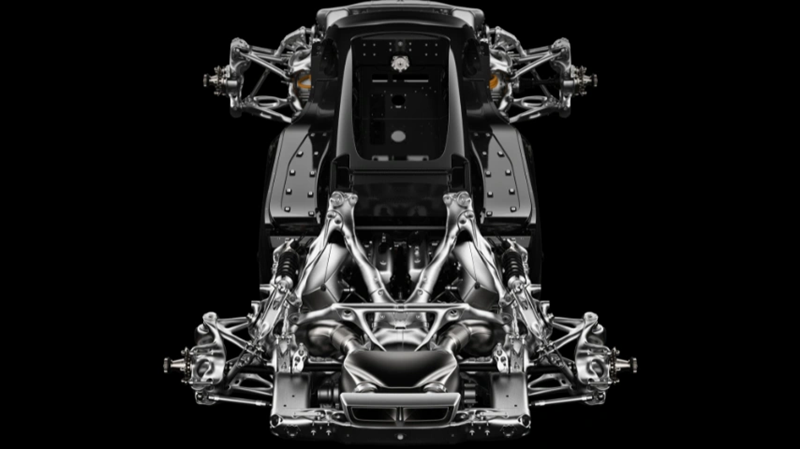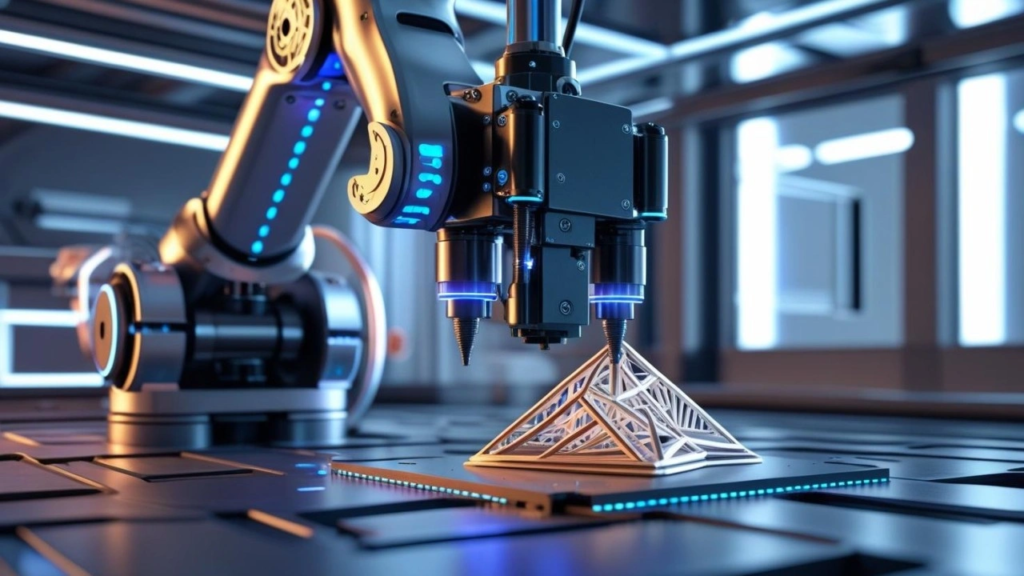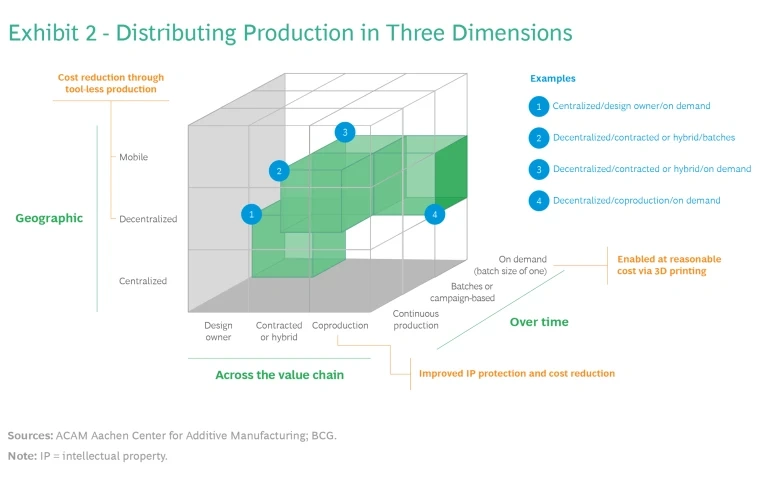
3D printing technology shows incredible promise with explosive market growth ahead. Current projections indicate a jump from USD 20.37 billion in 2023 to USD 110.13 billion by 2033, with a compound annual growth rate of 19.85%. This technology has become a game-changer not just in traditional manufacturing sectors like aerospace and automotive. It has transformed a variety of fields, including art, architecture, education, healthcare, and scientific research.
Industry experts predict the 3D printing sector will exceed $40 billion by 2030. The casting industry will see 40% adoption of additive manufacturing during this period. The technology now enables mass customization for both consumer and industrial products. Supply chain disruptions have highlighted 3D printing’s value. Companies can now ensure business continuity and build resilient supply chains through local production capabilities. While the future of additive manufacturing looks promising, some companies face challenges with material limitations that prevent full production adoption.
How 3D Printing Has Evolved

3D printing has come a long way since its birth in the 1980s. What started as a niche technology has grown into a manufacturing powerhouse that’s changing industries worldwide.
From prototyping to production
3D printing began as a rapid prototyping tool that helped designers and engineers test models and improve designs quickly. The technology has grown beyond simple prototyping and now serves full-scale production needs. Companies use it to make end-use parts in aerospace, automotive, and healthcare sectors. This remarkable shift lets manufacturers create complex, functional components that meet strict industry standards. The technology also helps create tooling, molds, and fixtures, which cuts down lead times in traditional manufacturing by a lot.
Speed, cost, and accessibility improvements
The financial landscape of 3D printing looks completely different now. You can buy entry-level printers for under $200, instead of spending thousands of dollars. Material prices have dropped too – a kilogram spool of PLA filament costs just $30-$50. These lower prices came with huge speed gains. Tasks that took days now finish in hours or minutes. MIT researchers proved this by creating a rapid printing technique with liquid metal that runs at least 10 times faster than similar methods. The game-changing moment arrived in 2004-2005 with the RepRap Project, which sparked the rise of desktop printers and made this technology accessible to more people.
Rise of industrial-grade printers
Industrial-grade 3D printers have transformed manufacturing with better capabilities. These machines create detailed, custom parts with less waste while meeting tough performance requirements. Today’s industrial printers offer multi-material printing options and greater accuracy than before. AI integration with 3D printing makes the process more efficient and easier to monitor. Large-format additive manufacturing has grown rapidly too. Machines like Medusa now work at speeds of 1,200mm per second—three times faster and twice as precise as standard machines. Metal 3D printing technology has also made huge strides, enabling the creation of complex, lightweight parts that weren’t possible before .
Key 3D Printing Innovations by 2030

Groundbreaking breakthroughs will redefine the possibilities in additive manufacturing by 2030. These advances will change manufacturing way beyond simple improvements. The way products are designed, manufactured, and monitored will fundamentally change.
AI-driven design and optimization
AI will change 3D printing by enhancing design precision and making it more efficient. AI-powered generative design tools will create complex geometries that traditional methods could never achieve, while optimizing material usage and structural integrity. These tools will suggest optimized shapes that use minimal material. AI will also improve defect detection and help predict mechanical properties. The AI-driven simulations will identify potential issues like warping before printing starts, which reduces trial-and-error attempts.
Automation in post-processing
The third step of additive manufacturing – post-processing – has always been tedious and labor-intensive, but that’s about to change. Complete technology solutions will produce customer-ready 3D printed parts at scale by 2030. This happens through automated support removal, resin cleaning, surface finishing, and powder removal. Advanced solutions will make the sorting process smoother, particularly in feeding, identification, sorting, quality control, and bagging. To cite an instance, automated vision systems will process up to 5,760 parts in 8 hours, which cuts down time and labor needed to identify parts.
Integration with IoT and robotics
3D printing will merge with Internet of Things (IoT) and robotics, becoming key elements of Industry 4.0 . This combination will optimize industrial component customization for efficiency and precision. IoT technology will enable live monitoring and management of 3D printing processes among predictive maintenance, which ensures continuous production. Robotic systems will handle many post-processing tasks with minimal human input, which boosts efficiency and maintains consistency across parts.
Digital twins and real-time monitoring
Digital twins – virtual replicas of physical systems – combined with additive manufacturing will revolutionize production. These dynamic, live digital counterparts capture data from machine sensors, combine simulation models, and use artificial intelligence to predict outcomes, spot defects, and optimize parameters. Engineers will find the best conditions for factors like temperature and printing speed through simulation before production begins. Advanced monitoring tools will catch errors early, and some systems can even detect the exact moment a pore forms during printing in less than a millisecond.
The Shift to Distributed Manufacturing

3D printing and additive technology are revolutionizing manufacturing by changing how and where products are made.
Decentralized production networks
3D printing’s future revolves around decentralized networks that connect printers beyond geographical limits. The 3DOS additive manufacturing network lets users produce parts on equipment they don’t own. This network connects 79,909 3D printers in more than 120 countries. Designers can earn royalties when someone buys and automatically produces their designs at the nearest location. These networks work just like Uber or DoorDash for manufacturing. Manufacturing partners who join these networks can make money from their idle printers and help fund new equipment.
Digital inventories and on-demand printing
Digital inventories are the lifeblood of future 3D printing technology and replace physical warehouses. Companies keep virtual files instead of storing physical parts that they can print whenever needed. This approach brings several benefits:
- Lower warehousing and logistics costs
- No more obsolete parts
- Quick ordering and delivery
- Better support for distributed production
Siena Garden now gives customers “eternal” spare parts through digital inventory systems. Customers can order furniture parts that print only when they need them. Miele uses this same approach to grow its vacuum cleaner accessories line without high fixed costs.
Localized supply chains and reduced emissions
Local production through 3D printing creates major environmental benefits beyond operational advantages. Product transportation typically makes up about 30% of a product’s carbon footprint. Local 3D printing cuts these transportation emissions from 30-35% to only 5%. The process also needs less raw material, which reduces material-related emissions from 20-25% to 10%. 3D-printed products generate 40% less carbon emissions than traditional manufacturing methods. This reduction could reach 60% with green practices. This approach fits perfectly with circular economy principles by cutting waste, making repairs easier, and supporting local, on-demand production.
Future 3D Printing Trends to Watch
Five transformative trends will reshape the future of 3D printing through 2030 as additive manufacturing grows beyond its industrial beginnings.
Mass customization at scale
Knowing how to create customized products without extra costs marks a fundamental change in manufacturing economics. Traditional methods need expensive molds for each variation. 3D printing makes customization possible by just updating digital files. Companies can now produce personalized items at identical costs, whether making one piece or thousands. American Pearl’s custom design service, Wiivv’s customized insoles, and Gillette’s Razor Maker platform already use this approach. Mass customization now extends beyond consumer products. Medical devices and automotive components have transformed too.
Sustainability and circular economy
3D printing plays a significant role in advancing sustainability initiatives in manufacturing sectors of all sizes. The Ellen MacArthur Foundation states that the circular economy changes “our throwaway economy into one where waste is eliminated, resources are spread, and nature is regenerated”. On-demand production eliminates about 90% of manufacturing waste. Small-batch production becomes economical and prevents the excess production of unwanted goods. Products last longer through effective repairs with replacement parts. Many manufacturers now use recycled and biodegradable materials. PLA comes from renewable resources like corn or sugarcane.
Standardization and certification processes
The biggest problem remains standardization, but the industry works hard to solve it. Complex designs lack communication standards, which creates barriers to wider adoption. In spite of that, ISO and ASTM International worked together to create the Additive Manufacturing Standards Development Structure. This framework helps meet the growing need for technical standards in this fast-changing field. These standards update faster than conventional ones that might stay unchanged for decades.
New business models and service ecosystems
Service-based business models thrive in the 3D printing ecosystem. Companies share manufacturing infrastructure to create networked production capabilities. Businesses can access multiple technologies and materials without investing heavily in equipment. Designers use platforms like Gantri to bypass traditional manufacturing hurdles. Time-to-market drops from 18 months to about three weeks. Additive manufacturing’s flexibility creates adaptable, modular business models that respond quickly to market changes.
Consumer-level adoption and home printing
The consumer 3D printing market keeps growing thanks to research developments and rising demand for prototyping. Consumer-level 3D printing value should grow from USD 4.40 billion to nearly USD 21.00 billion by 2030. Governments worldwide invest to promote adoption in industries of all types. India wants to capture 5% of the global market share. Current adoption rates remain low, but prices keep dropping. What used to cost thousands now sells for under $200. The DIY movement gains in status by spreading. Enthusiasts create everything from customized sporting equipment to fashion accessories.
Conclusion
3D printing technology will evolve from a niche prototyping tool to a manufacturing powerhouse by 2030. This change will revolutionize production economics. Companies can now customize products at scale without extra costs and reduce their environmental footprint.
3D printing has reached a turning point after decades of development. Companies of all sizes now see its value in simplifying supply chains, cutting waste, and exploring new design possibilities. The combination of AI, IoT, and robotics makes these benefits even more powerful, creating manufacturing systems that outperform traditional methods.
Decentralized manufacturing networks represent a major transformation in the industry. These systems bring production closer to customers, which cuts transportation emissions and enables quick delivery. Digital storage replaces physical warehouses, which eliminates storage expenses and outdated inventory problems.
3D printing offers clear environmental benefits. The technology supports a circular economy through less material waste and lower transportation emissions. New industry standards will help more sectors adopt this technology, especially those needing strict certification.
Consumers can access 3D printing more easily now. The technology costs less than ever, making it accessible to hobbyists, small businesses, and schools. This wider availability encourages new ideas from unexpected places.
Some materials still pose challenges, but research continues to expand printing possibilities. The industry moves toward a future where complex designs cost no extra money, customization becomes normal, and products are made where needed. Without doubt, as 3D printing grows through 2030, it will change how products are made and revolutionize business models and supply chains worldwide.
Key Takeaways
The 3D printing industry is experiencing explosive growth and transformation, evolving from a prototyping tool into a manufacturing powerhouse that will reshape global production by 2030.
• Market explosion ahead: 3D printing market will surge from $20.37 billion in 2023 to $110.13 billion by 2033, with 40% of casting industry adopting additive manufacturing.
• AI and automation revolution: AI-driven design optimization and automated post-processing will eliminate trial-and-error iterations while enabling customer-ready parts at unprecedented scale.
• Distributed manufacturing transforms supply chains: Digital inventories replace physical warehouses, enabling on-demand production that reduces carbon emissions by 40-60% through localized manufacturing.
• Mass customization without cost penalties: Unlike traditional manufacturing requiring expensive molds, 3D printing enables personalized products at the same cost whether making one or thousands.
• Sustainability becomes standard: 3D printing eliminates 90% of manufacturing waste while supporting circular economy principles through on-demand production and recyclable materials.
This technological convergence positions 3D printing as the foundation for smarter, more sustainable manufacturing ecosystems that produce closer to consumers while dramatically reducing environmental impact and operational costs.
FAQs
Q1. What major changes can we expect in 3D printing by 2030? By 2030, the 3D printing industry is projected to be valued at over $40 billion. Key changes include AI-driven design optimization, automated post-processing, integration with IoT and robotics, and the rise of distributed manufacturing networks. These advancements will enable mass customization, improve sustainability, and transform traditional supply chains.
Q2. How will 3D printing impact manufacturing and supply chains? 3D printing will enable decentralized production networks, allowing items to be manufactured closer to end-users. This shift will reduce transportation emissions, minimize warehousing costs, and enable on-demand production. Digital inventories will replace physical warehouses, eliminating issues of part obsolescence and reducing overall carbon footprint.
Q3. What role will AI play in the future of 3D printing? AI will revolutionize 3D printing by enhancing design precision and efficiency. AI-powered tools will create complex geometries, optimize material usage, and predict potential issues before printing begins. This integration will significantly reduce trial-and-error iterations and improve overall production quality.
Q4. How will 3D printing contribute to sustainability efforts? 3D printing will play a crucial role in advancing sustainability by eliminating approximately 90% of manufacturing waste through on-demand production. It will support circular economy principles by enabling effective repairs, extending product lifespans, and facilitating the use of recycled and biodegradable materials. Overall, 3D-printed products can produce up to 60% less carbon emissions compared to traditional manufacturing methods.
Q5. Will 3D printing become more accessible to consumers? Yes, consumer-level 3D printing is expected to grow significantly, with the market projected to reach nearly $21 billion by 2030. Affordability is improving, with entry-level printers now available for under $200. This increased accessibility is fueling the DIY movement, allowing enthusiasts to create a wide range of customized products at home.

